Potrebujeme váš súhlas na využitie jednotlivých dát, aby sa vám okrem iného mohli ukazovať informácie týkajúce sa vašich záujmov. Súhlas udelíte kliknutím na tlačidlo „OK“.
ASTM E2330-12
Standard Test Method for Determination of Concentrations of Elements in Glass Samples Using Inductively Coupled Plasma Mass Spectrometry (ICP-MS) for Forensic Comparisons
Automaticky preložený názov:
Štandardná skúšobná metóda pre stanovenie koncentrácií prvkov v skle vzoriek pomocou indukčne viazanou plazmou hmotnostnej spektrometrie (ICP-MS) pre forenznú Porovnanie
NORMA vydaná dňa 15.6.2012
Informácie o norme:
Označenie normy: ASTM E2330-12
Poznámka: NEPLATNÁ
Dátum vydania normy: 15.6.2012
Kód tovaru: NS-45048
Počet strán: 7
Približná hmotnosť: 21 g (0.05 libier)
Krajina: Americká technická norma
Kategória: Technické normy ASTM
Kategórie - podobné normy:
Anotácia textu normy ASTM E2330-12 :
Keywords:
forensic science, glass comparisons, glass measurement, trace elemental analysis, ICS Number Code 07.140 (Forensic science), 71.040.40 (Chemical analysis), 81.040.10 (Raw materials and raw glass)
Doplňujúce informácie
| Significance and Use | ||
|
This technique is destructive, in that the glass fragments may need to be crushed, and must be digested in acid. Although the concentration ranges of the calibration curves shown in Appendix X1 are applicable to soda lime and borosilicate glass, this method is useful for the accurate measurement of element concentrations from a wide variety of glass samples. The determination of the element concentrations in glass yields data that can be used to compare fragments. It should be recognized that the method measures the bulk concentration of the target elements. Any extraneous material present on the glass that is not removed before digestion may result in inaccurate concentrations of the measured elements. The precision and accuracy of the method should be established in each laboratory that employs the method. |
||
| 1. Scope | ||
|
1.1 One objective of a forensic glass examination is to compare glass samples to determine if they can be discriminated using their physical, optical or chemical properties (for example, color, refractive index (RI), density, elemental composition). If the samples are distinguishable in any of these observed and measured properties, it may be concluded that they did not originate from the same source of broken glass. If the samples are indistinguishable in all of these observed and measured properties, the possibility that they originated from the same source of glass cannot be eliminated. The use of an elemental analysis method such as inductively coupled plasma mass spectrometry yields high discrimination among sources of glass. 1.2 This test method covers a procedure for quantitative determination of the concentrations of magnesium (Mg), aluminum (Al), iron (Fe), titanium (Ti), manganese (Mn), rubidium (Rb), strontium (Sr), zirconium (Zr), barium (Ba), lanthanum (La), cerium (Ce), neodymium (Nd), samarium (Sm), and lead (Pb) in glass samples. 1.3 This procedure is applicable to irregularly shaped samples as small as 200 micrograms, for the comparison of fragments of a known source to the recovered fragments from a questioned source. These elements are present in soda lime and borosilicate glass in ppb to % levels 1.4 This procedure is applicable to other elements, other types of glass, and other concentration ranges with appropriate modifications of the digestion procedure (if needed for full recovery of the additional elements), calibration standards and the mass spectrometer conditions. Calcium and potassium, for example, could be added to the list of analytes in a modified analysis scheme. Alternative methods for the determination of concentrations of elements in glass are listed in the references. 1.5 For any given glass, approximately 40 elements are likely to be present at detectable concentrations using this procedure with minor modifications. The element set stated here is an example of some of these elements that can be detected in glass and used for forensic comparisons. 1.6 This guide cannot replace knowledge, skill, or ability acquired through appropriate education, training, and experience and should be used in conjunction with sound professional judgment. 1.7 The values stated in SI units are to be regarded as standard. No other units of measurement are included in this standard. 1.8 This standard does not purport to address all of the safety concerns, if any, associated with its use. It is the responsibility of the user of this standard to establish appropriate safety and health practices and determine the applicability of regulatory limitations prior to use. |
||
| 2. Referenced Documents | ||
|
Podobné normy:
Historická
1.11.2009
Historická
1.10.2008
Historická
1.9.2012
Historická
1.3.2010
Historická
1.4.2008
Historická
1.3.2014
Odporúčame:
Aktualizácia technických noriem
Chcete mať istotu, že používate len platné technické normy?
Ponúkame Vám riešenie, ktoré Vám zaistí mesačný prehľad o aktuálnosti noriem, ktoré používate.
Chcete vedieť viac informácií ? Pozrite sa na túto stránku.


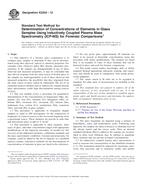
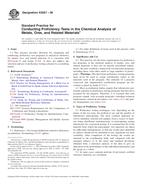 ASTM E2027-09
ASTM E2027-09 ASTM E203-08
ASTM E203-08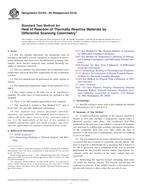 ASTM E2160-04(2012)..
ASTM E2160-04(2012)..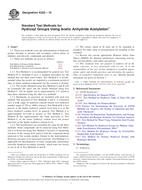 ASTM E222-10
ASTM E222-10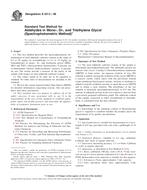 ASTM E2313-08
ASTM E2313-08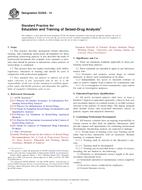 ASTM E2326-14
ASTM E2326-14
 Cookies
Cookies
